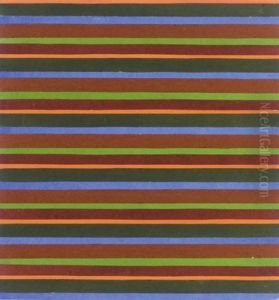Mikhail Vasilievich Matyushin Paintings
Mikhail Vasilievich Matyushin was a Russian artist, composer, and theorist, who left a significant mark on the avant-garde movement of the early 20th century. Born on July 17, 1861, in Nizhny Novgorod, Russia, Matyushin embarked on a multifaceted career that spanned various disciplines, including music, painting, and theoretical research, reflecting the interdisciplinary spirit of the Russian avant-garde. He is perhaps best known for his work in expanding the visual and conceptual boundaries of art, particularly through his involvement with the Russian Futurist movement and his experiments with spatial perception.
Matyushin studied at the Saint Petersburg Conservatory, where he honed his skills as a violinist and composer. However, his artistic aspirations were not confined to music alone. In the 1910s, he became closely associated with the Russian avant-garde, particularly the group known as the Union of Youth, which sought to integrate different art forms and explore new aesthetic territories. His marriage to Elena Guro, a prominent figure in the Russian Futurist movement, further deepened his engagement with avant-garde art.
A key moment in Matyushin’s career was his collaboration on the opera 'Victory Over the Sun' (1913), for which he composed the music. The opera, with a libretto by Alexei Kruchenykh and sets designed by Kazimir Malevich, was a seminal work of Russian Futurism, showcasing a radical departure from traditional narrative and aesthetic norms. Through this and other projects, Matyushin sought to explore the synthesis of sensory experiences and the concept of the 'fourth dimension' in art, which he believed could be achieved through the integration of space and time.
In the 1920s, Matyushin turned his attention to visual art and theory, particularly focusing on the study of color perception and spatial dynamics. He established the State Institute of Artistic Culture in Leningrad, where he conducted experimental research on visual and spatial perception. His work during this period aimed at expanding the boundaries of visual experience, advocating for a more holistic and integrated approach to seeing the world. Matyushin’s theories on color and space were influential in the development of Russian Constructivism and had a lasting impact on the evolution of modern art.
Mikhail Vasilievich Matyushin passed away on October 14, 1934, in Leningrad (now Saint Petersburg), Russia. Throughout his life, he remained a visionary figure who constantly sought to transcend the conventional limits of artistic expression. His interdisciplinary approach and pioneering theories continue to inspire artists and theorists, making him a key figure in the history of the avant-garde.


